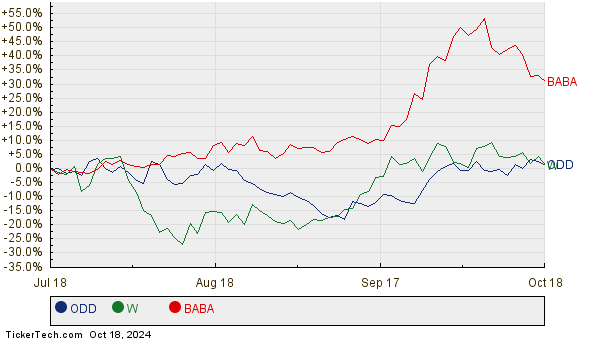Earlier this week, the automotive world witnessed a seismic event as the curtain was drawn on Tesla’s (NASDAQ: TSLA) first-quarter operating results. Tesla, the titan of electric vehicles, has long been a beacon of innovation and disruption in the industry. Clocking in at nearly 1.85 million EVs produced in the previous year, Tesla stands as a trailblazer among automakers, boasting a rare baseline of recurring profits as per Generally Accepted Accounting Principles (GAAP).
However, beneath its shiny facade of success lies a set of financial figures that paint a different picture. Despite its early entry into the EV market and its historic outperformance of the S&P 500 over the past ten years, Tesla’s recent operating results reveal a troubling truth: it may not be the golden investment opportunity it once appeared to be.
Here are 10 key figures that shed light on why Tesla may not be the sound investment choice many believe it to be.

The Waning Operating Margin: 5.5%
EV demand has waned in a market flooded with options, prompting Tesla to slash prices repeatedly. As a result, Tesla’s once-healthy operating margin has plummeted from 17.2% to a meager 5.5% over the past six quarters. Surprisingly, Tesla’s operating margin now lags behind most traditional automakers, marking a stark departure from its previous position of strength.
Rising Inventory Woes: 28 Days of Supply
Tesla’s efforts to manage inventory levels have faltered, with the company’s global vehicle inventory swelling from 15 days to 28 days within a mere three months. Despite aggressive price reductions, Tesla continues to grapple with mounting inventory levels, prompting drastic measures such as cutting the price of its full self-driving (FSD) software. These escalating inventory woes foreshadow potential price cuts that could further squeeze margins.
Underutilized Production Capacity: 66%
Despite boasting a production capacity exceeding 2.35 million EVs annually across its gigafactories, Tesla’s first quarter deliveries fell short at 386,810 vehicles, translating to less than 1.55 million EVs on an annualized basis. This underutilization, amounting to a mere 66% of capacity, has forced Tesla to contemplate layoffs, highlighting a significant mismatch between production potential and actual output.
Cybertruck’s Struggles: 3,878 Deliveries
Tesla’s much-hyped Cybertruck has faltered, with only 3,878 units delivered since its launch amidst a recall to rectify malfunctioning accelerator pedals. Despite a production capacity exceeding 125,000 units annually at Tesla’s Texas gigafactory, demand for the Cybertruck appears lackluster, underscoring a missed mark on market expectations.
Cash Flow Conundrum: Negative-$2.53 Billion in Q1
Bucking a trend of positive free cash flow, Tesla reported a staggering negative $2.53 billion in free cash flow for the first quarter, despite moderate upticks in capital expenditures. As price reductions dent operating margins, sustaining positive cash flow remains a daunting challenge for Tesla, posing a significant financial hurdle in the near term.
FSD Elusiveness: 10 Years of Unfulfilled Promises
CEO Elon Musk’s recurrent pledge of achieving full autonomy within a year has become a running joke, failing to materialize over a decade of promises. Musk’s grand ambitions around Full Self-Driving (FSD) and robotaxi services have repeatedly fallen short, casting a shadow of doubt over Tesla’s ability to deliver on its visionary promises.
Revealing the Unseen: Why Tesla Might Not be the Golden Egg After All
To achieve full autonomy or unleash robotaxis on public roads is an endearing dream for Tesla. Still, the reality is harsher, reminiscent of a child yearning for a long-lost toy, unable to move past the setbacks. The road to Level 2 autonomy seems endless, leaving investors in a perpetual state of anticipation since half a decade.

Image source: Getty Images.
Understanding the Numbers: Unsustainable Sources of Pre-Tax Income
Tesla’s pre-tax income reveals a troubling tale of reliance on unsustainable sources, making the stock less attractive to savvy investors. While the company raked in $1.55 billion in pre-tax income in the first quarter, a significant chunk, $442 million, came from selling regulatory tax credits, with an additional $350 million obtained from interest income on cash. A staggering 51% of Tesla’s pre-tax income stemmed from these non-core profit streams, raising eyebrows and investor concerns.
The Diminishing Dream: Lackluster Growth in Non-EV Segments
The fable of Tesla’s growth extends beyond electric vehicles into the Energy Generation and Storage segment, a domain where the company’s story is starting to lose its shine. Although the segment saw an overall increase in sales during the first quarter, the growth rate dwindled to a meager 7% year-over-year. Despite an upsurge in Services revenue, the associated gross margin stagnates between 3% to 5% in most quarters. Elon Musk’s aspiration to depict Tesla as more than just a car company is noble, but a stunning contradiction emerges when financial statements sing a different tune.
An Unfathomable Sum: Elon Musk’s Staggering Pay Package
The saga takes a surreal turn with Elon Musk’s extravagant $56 billion compensation package awaiting approval at the upcoming annual meeting. The Delaware court’s overturning of Musk’s previous $56 billion package due to its outlandish nature has raised serious doubts. A CEO demanding a sum equivalent to 11% of the company’s total market cap is a narrative that doesn’t align with a firm currently bleeding cash. While Musk’s innovative spirit is undeniable, a history of unmet promises and underdelivered innovations shadows his legacy, painting a grim portrait of prioritizing personal gain over company well-being.
A Stratospheric Peak: Tesla’s Soaring Price-to-Earnings Ratio
Lastly, the financial skies grow cloudier as Tesla’s stock becomes pricier in tandem with its declining share value. Wall Street’s projections put Tesla’s price-to-earnings ratio at a staggering 63 times the forecasted earnings for 2024, well beyond the modest 6 to 8 times range typically observed in the automotive sector. As consensus veers towards a declination in Tesla’s growth narrative, the allure of investing in the electric giant begins to fade, rendering its stock unappealing to seasoned investors.
When our analytic wizards divulge market secrets, the prudent choice is to listen intently. Over the past two decades, the venerable Motley Fool Stock Advisor has outperformed the market by leaps and bounds. By tuning in, you could unearth priceless investment gems hidden in plain sight.
They have recently unveiled what they regard as the 10 best stocks, an elite club the likes of Tesla belong to, yet overshadowed by 9 other intriguing contenders.
*Stock Advisor returns as of April 22, 2024




